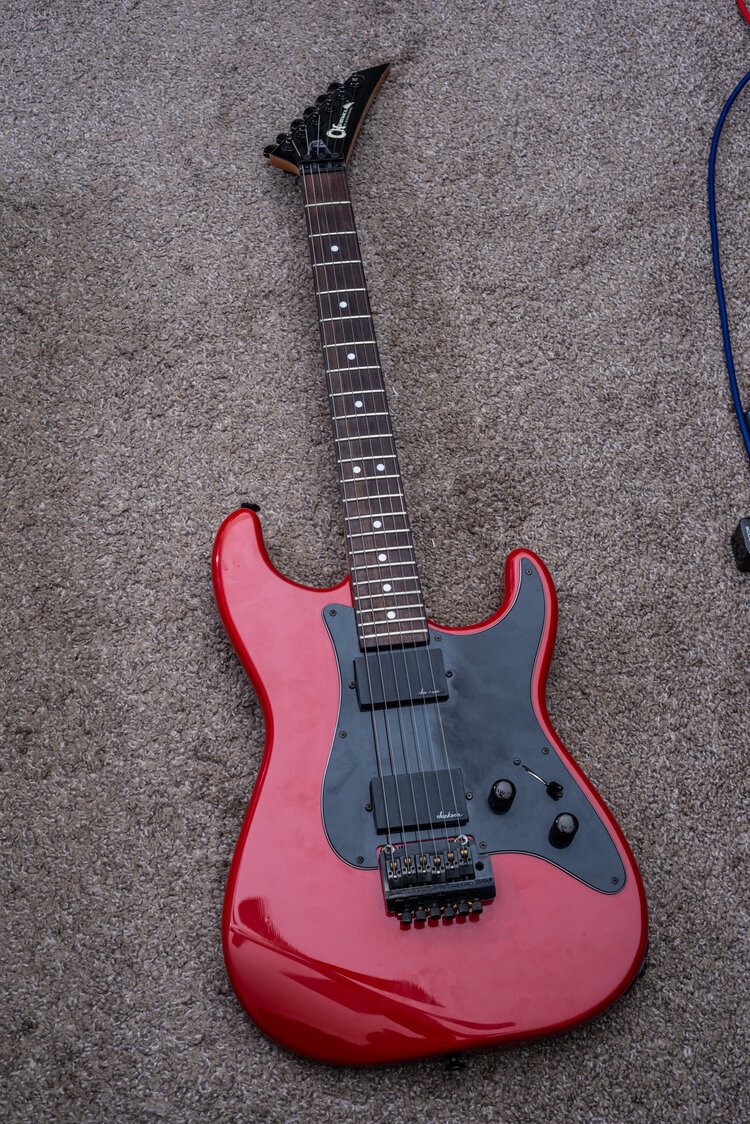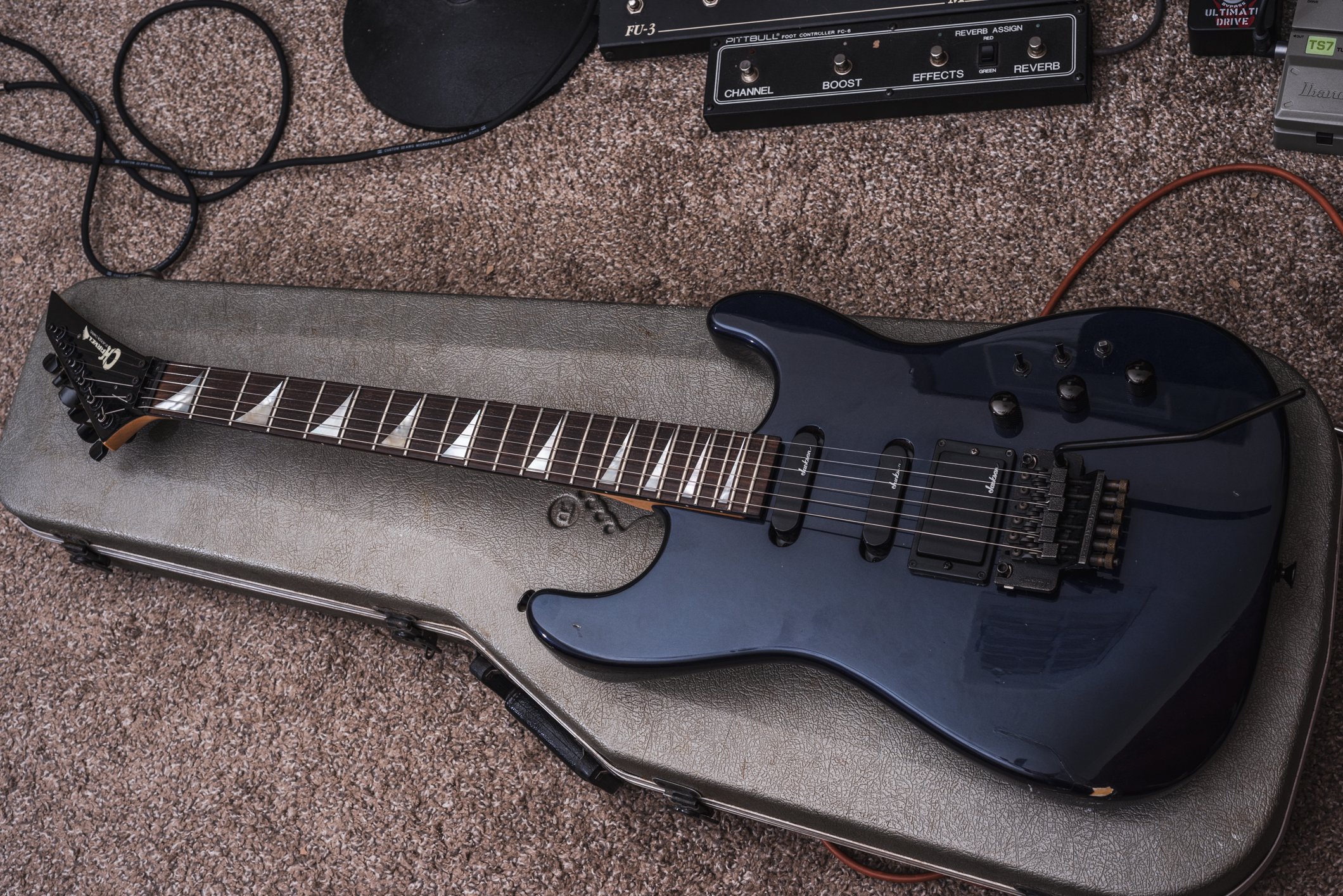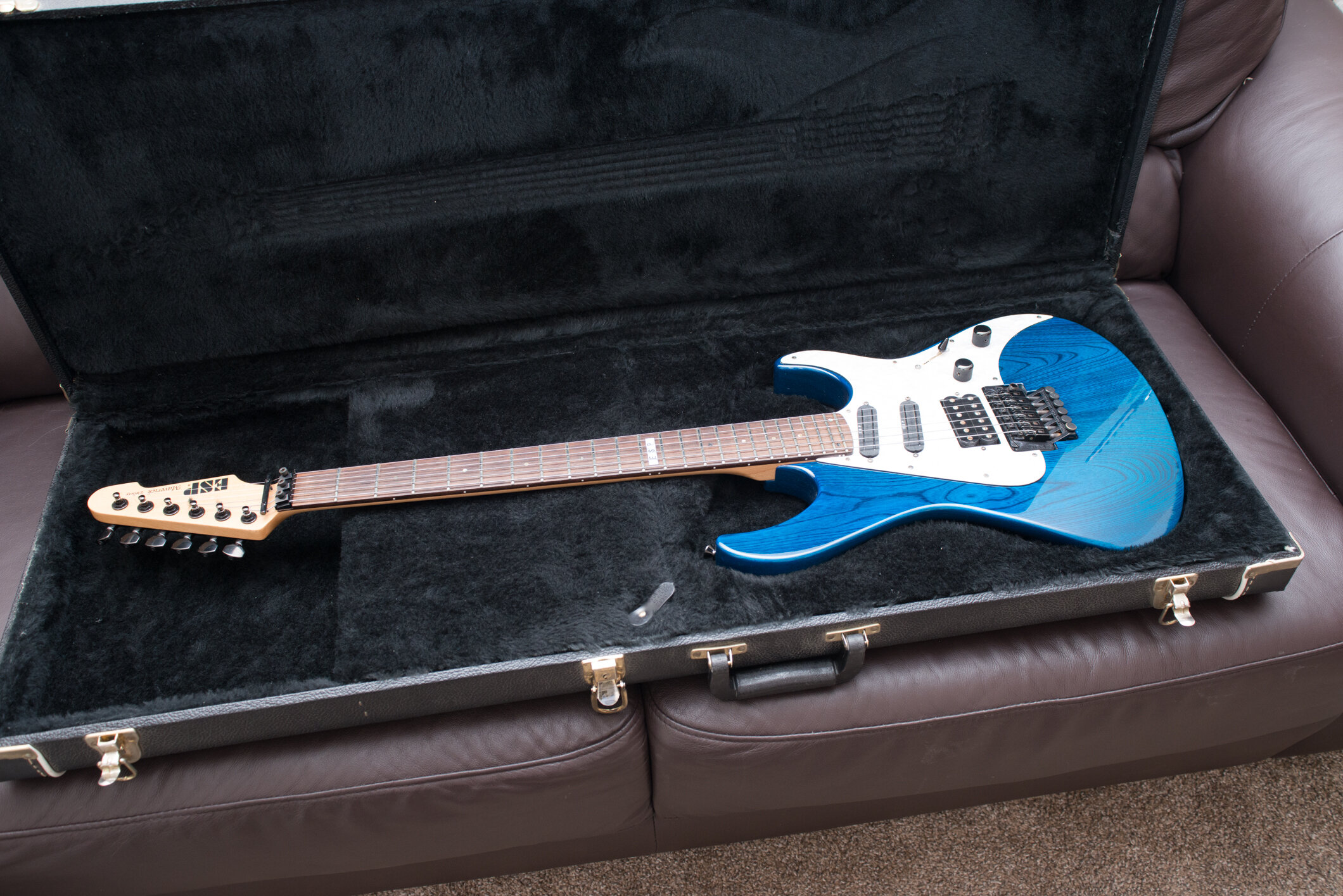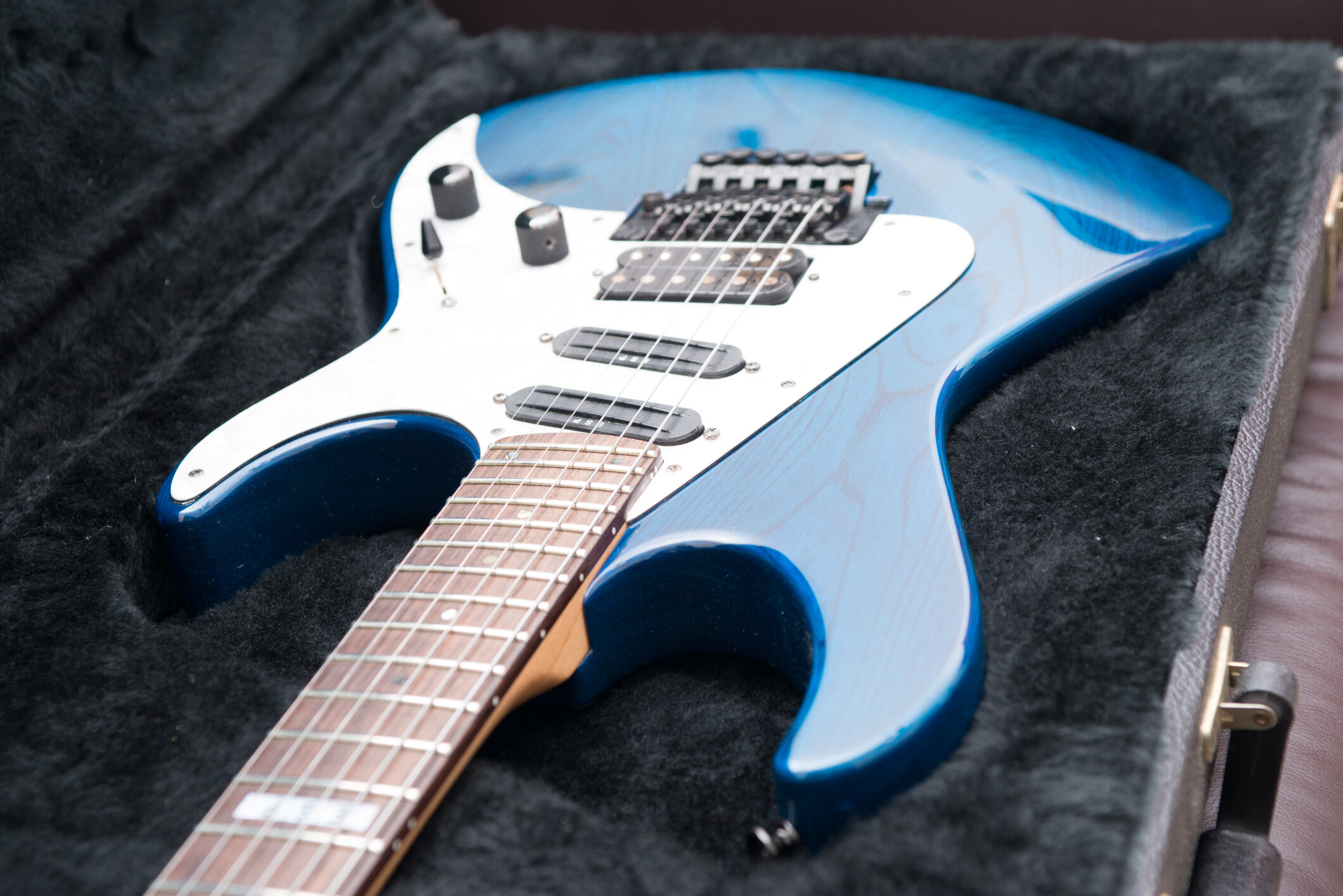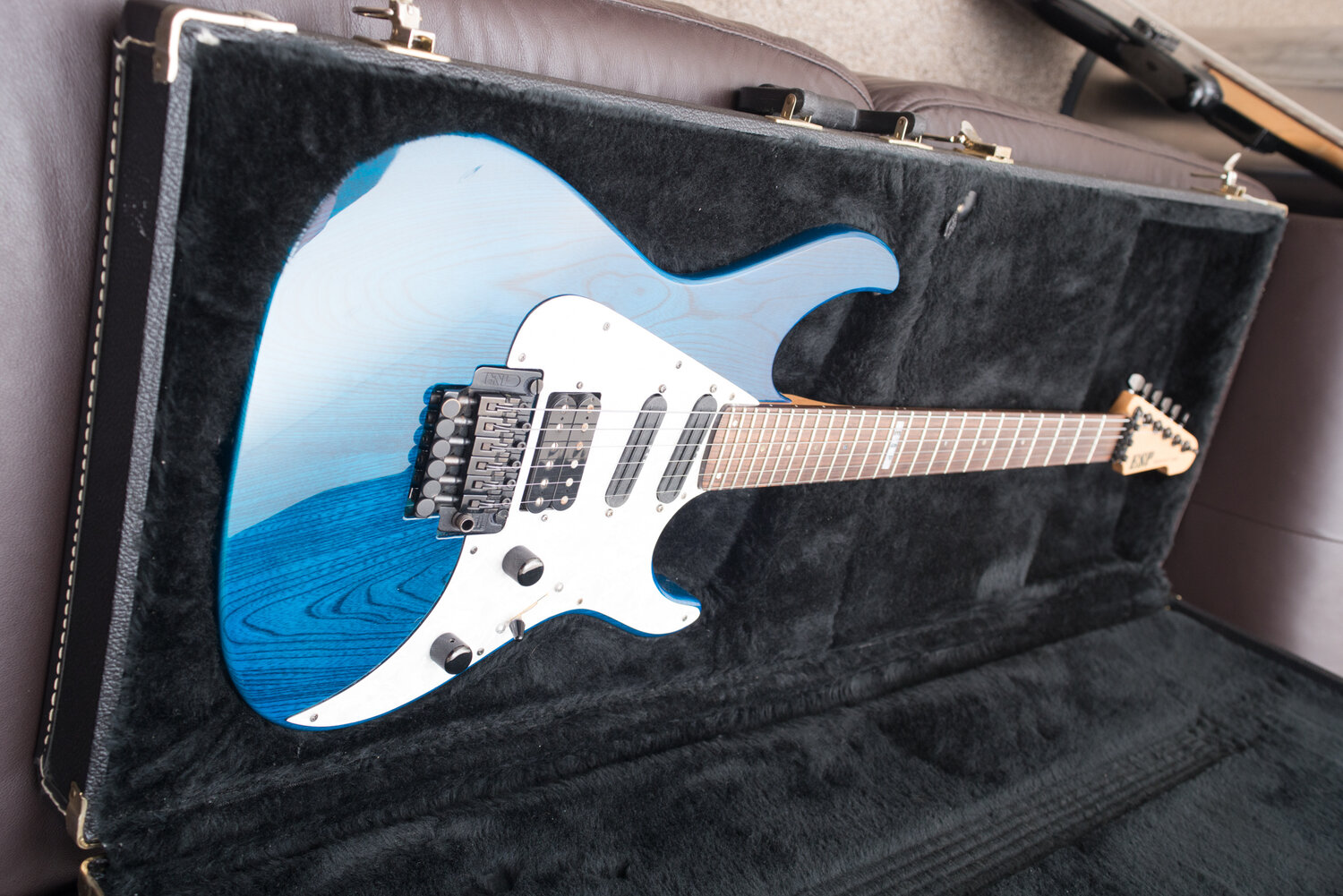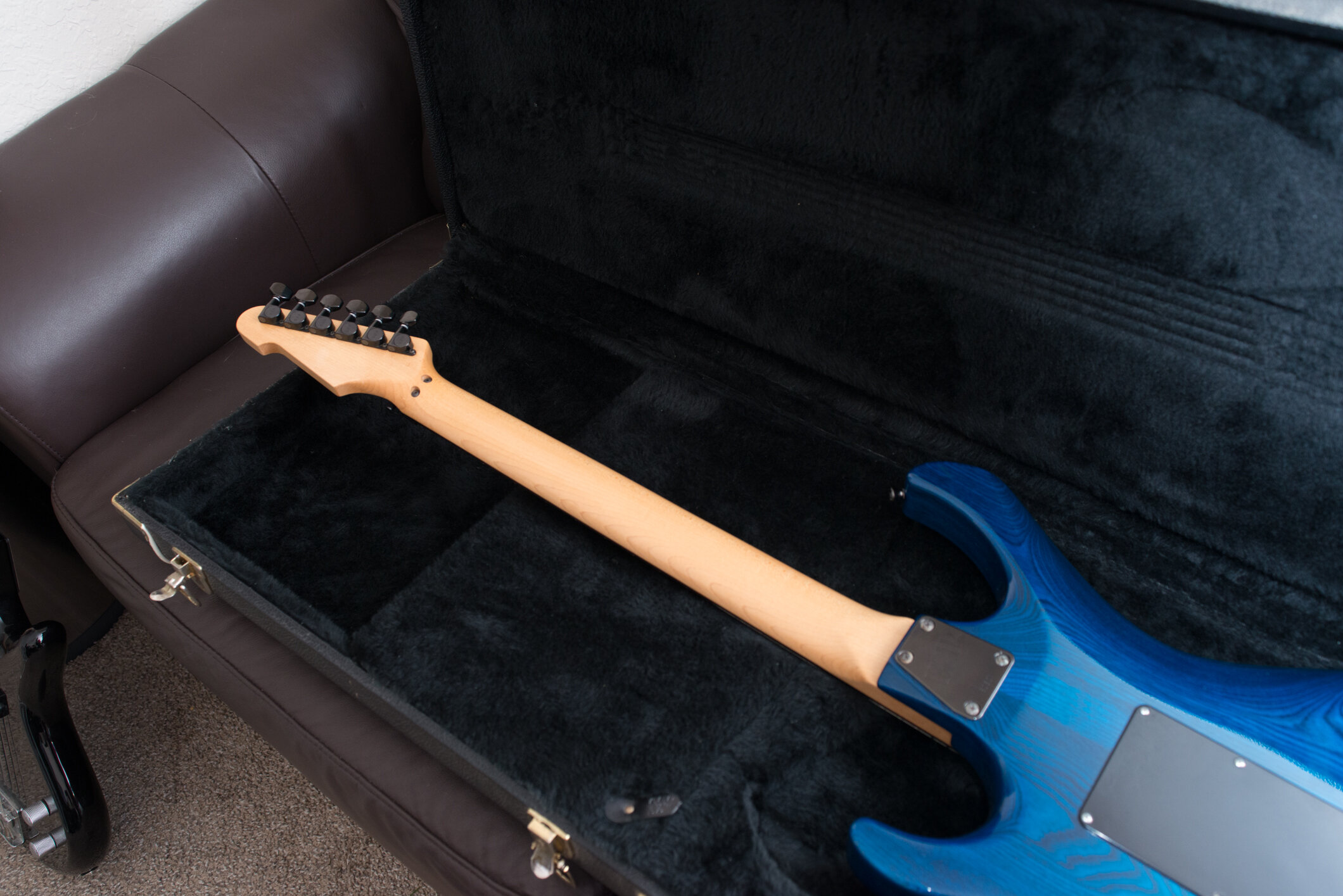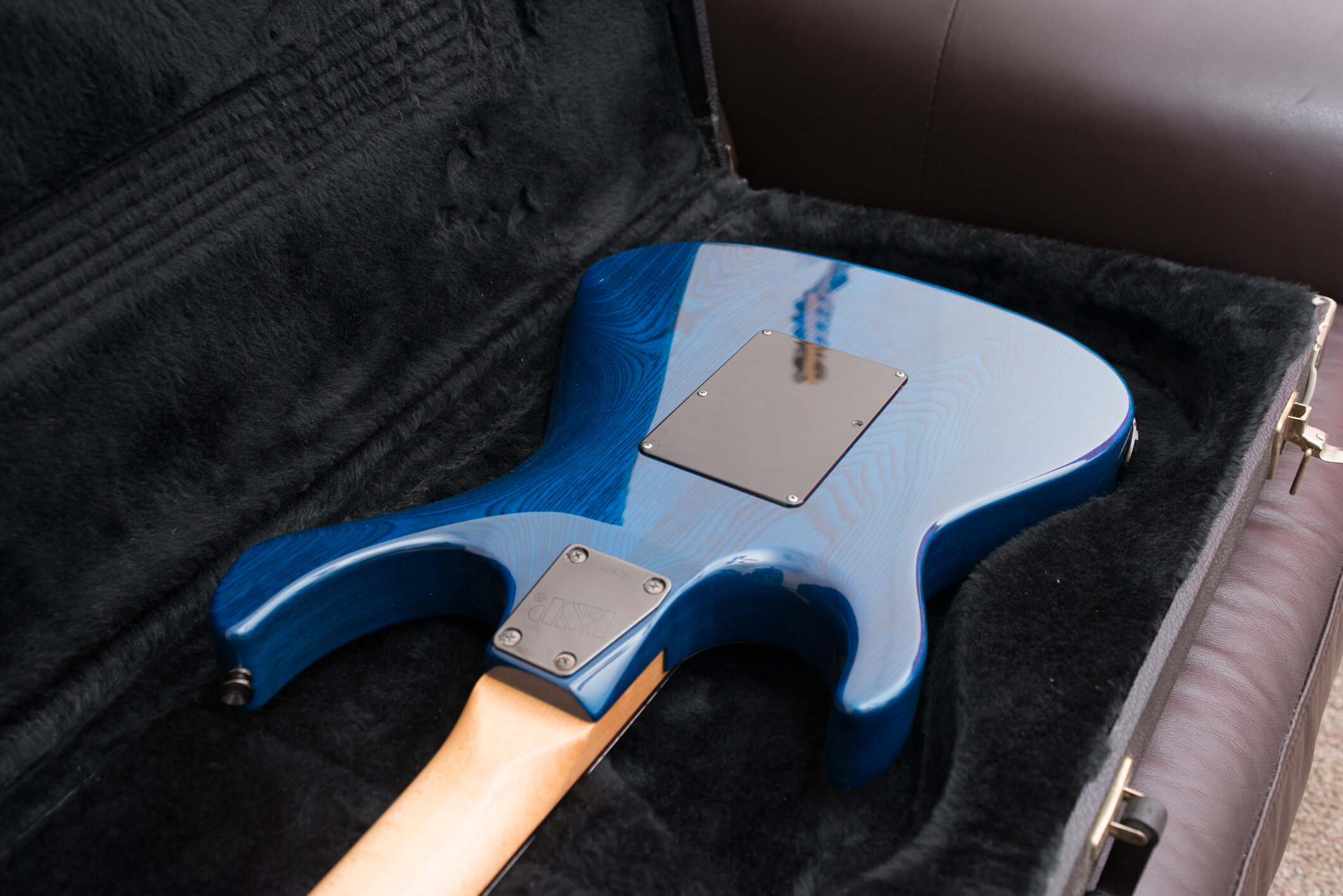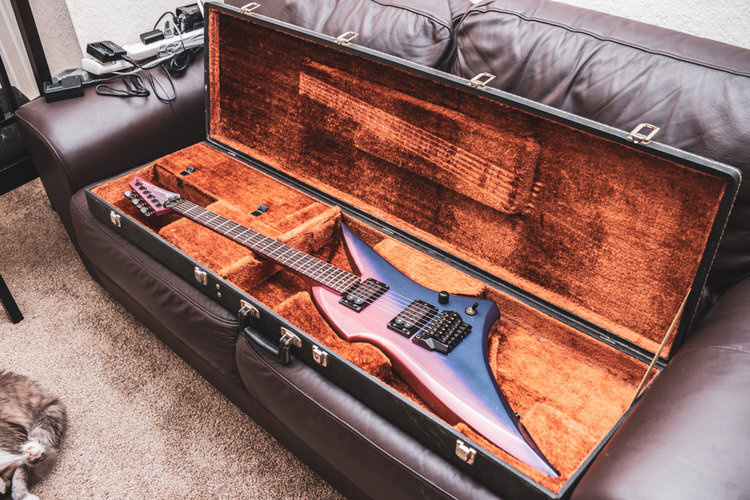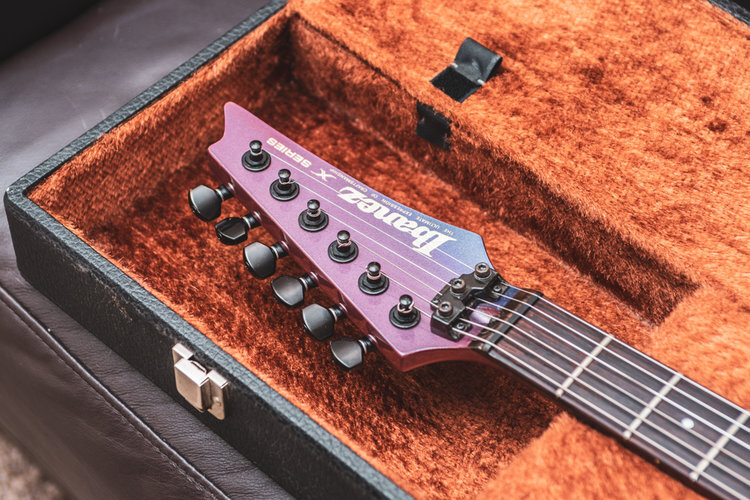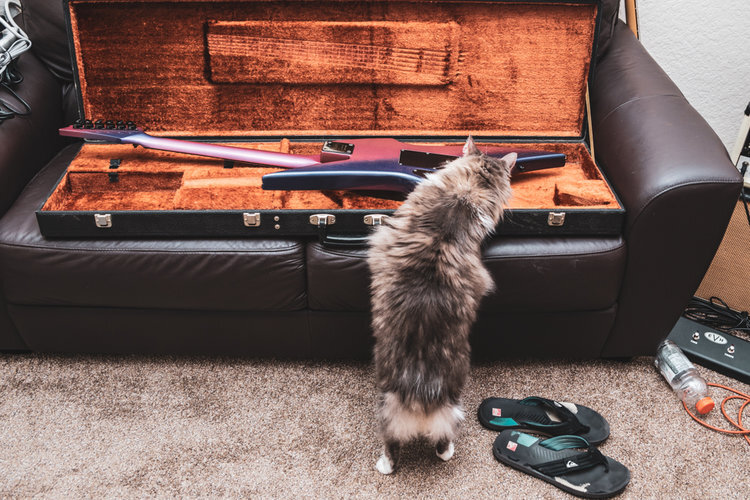I’ve always liked the look of these and they have a pretty unique history, coming out in the late 80s during a time when BC Rich was struggling financially and eventually ended up selling their brand name to Class Axe. This guitar is from before the sale, in 1987 - USA made and a very fine quality instrument. These also used top mounted Ibanez Edge tremolos, which were very new at the time and are close to OFR quality - some even prefer these trems to OFR’s and I can see why.
I picked this one up for a great price from Guitar Center, and it came equipped with a Roland GK-2A pickup. I doubt the natural finish is original, but if the original color was stripped they did a very clean job and the light satin finish is very well done. I’ve never had a Roland GK before either, so I look forward to trying it out - my initial look at Youtube videos makes this system look extremely cool and I’d love to be able to play some synthesizer or saxophone parts on my guitar!
In addition to the satin finished body, the neck is also a very bare wood feeling on the back, with an extremely thick slab of rosewood for the fretboard. When it arrived, this guitar had a Parallel Axis PATB-3 pickup in the bridge position, which is a sweet sounding pickup if a little lower output than I usually prefer in the bridge position, and a Quarter Pounder in the neck which is a highlight - I’m surprised just how much I like this high output, bassy single coil pickup.


